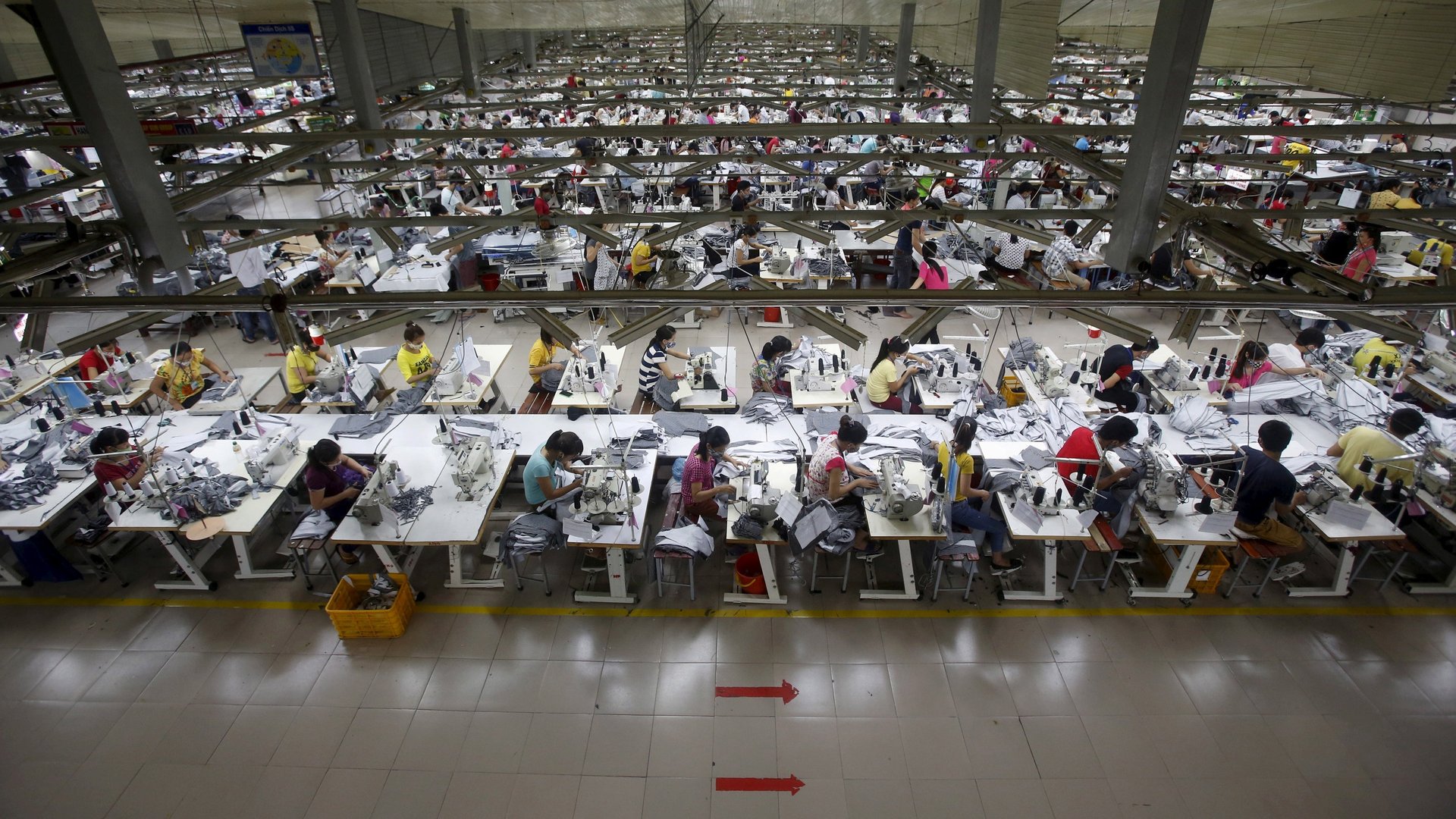Robots are set to take the jobs of millions of Asian workers in the coming years
In the next few decades, about 56% of all salaried workers in Cambodia, Indonesia, the Philippines, Thailand, and Vietnam could be displaced by automation and advanced technologies, such as 3D printing. That’s the conclusion of an extensive series of new studies by the International Labour Organization (ILO).


In the next few decades, about 56% of all salaried workers in Cambodia, Indonesia, the Philippines, Thailand, and Vietnam could be displaced by automation and advanced technologies, such as 3D printing. That’s the conclusion of an extensive series of new studies by the International Labour Organization (ILO).
Mass-scale displacement won’t happen overnight, but it’s already in the works. Robots, for instance, are increasingly handling the labor previously done by low-skilled workers in industries such as automotive and electronics manufacturing. For governments and employers willing to educate and train workers for new, high-tech jobs, the shift could benefit all as it raises productivity and wages. But employers and countries that continue to rely on low-cost manual labor as their chief competitive advantage risk being left behind in the global economy, the ILO said.
Of the five industries examined by the studies, workers in textiles, clothing, and footwear were the most at risk. The sector encompasses 9 million jobs across the ASEAN member states the report covers, the majority held by women. These jobs often entail simple manual tasks that are becoming easily automated, such as cutting fabric.
In Vietnam, the ILO report documents, one clothing manufacturer that invested in automated cutting machines last year was able to replace 15 workers for each machine. In 18 months, it will prove more cost-effective than continuing to employ the workers. Fewer workers are needed, and those employed each manage three to four machines.
Automation won’t necessarily proliferate across the ASEAN countries, according to the ILO. The spread of robotic sewing machines, or “sewbots,” will likely happen in Europe and the US, as companies seek to bring manufacturing and production closer to their main consumer markets. Adidas recently unveiled a new robot “Speedfactory” in Germany, and plans to shift production from China.

Though China, too, is putting money into machines to remain competitive with its lower-cost neighbors. Take Esquel Group, a Hong Kong-based firm that produces more than 100 million shirts a year, which has invested in automation to boost productivity as Chinese wages rise.
It’s Southeast Asian workers who are most at risk of losing their jobs, according to the report. Some 64% of textile, clothing, and footwear workers in Indonesia could be replaced by robots. Those numbers rise to 86% in Vietnam, and 88% in Cambodia.
“Countries that compete on low-wage labour need to reposition themselves,” Deborah France-Massin, director of the ILO’s Bureau for Employers’ Activities, said in a statement. “Policymakers need to create a more conducive environment that leads to greater human capital investment, research and development, and high-value production.”
The report doesn’t cover Bangladesh as it’s not in ASEAN, but there’s probably no country more dependent on cheap manual labor. The garment industry, which employs 4 million workers, accounts for about 82% of the country’s total exports.
Such a situation is problematic, says Sabina Dewan, president of the JustJobs Network, a think-tank focused on global employment and development. ”If I perceive low-cost labor to be my competitive advantage, why would I want to upgrade the skills of my workers when they’re just going to ask for higher wages?” she says. Bangladesh’s dependence on one sector also means workers have few other industries to absorb them if they lose jobs to automation.
“In the long-run, such a model that relies on exploiting cheap labor is unsustainable,” she says.